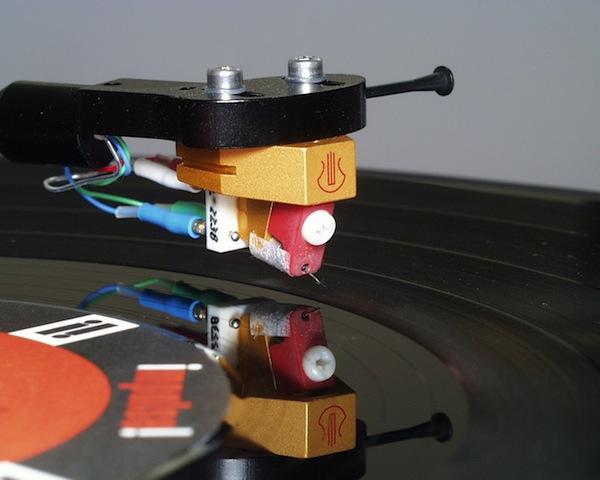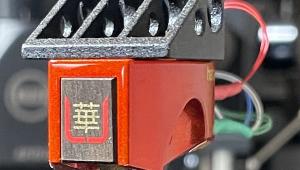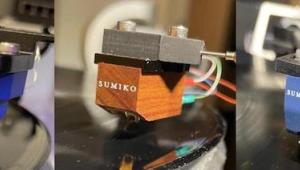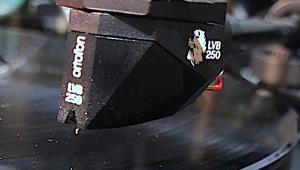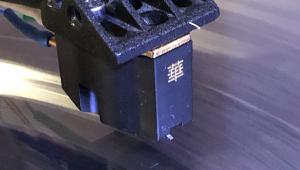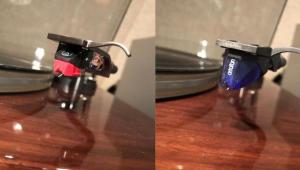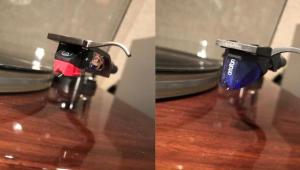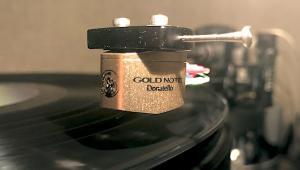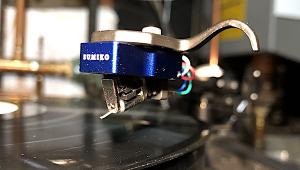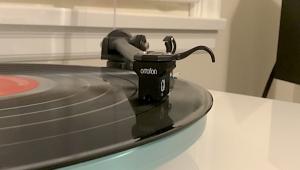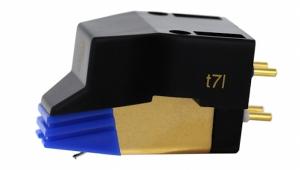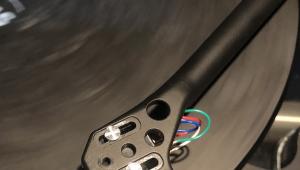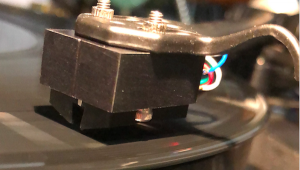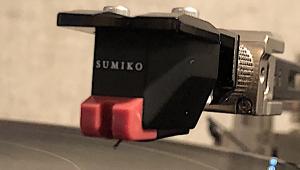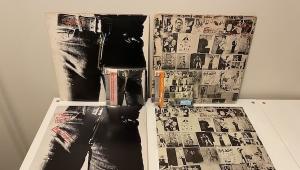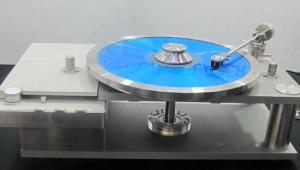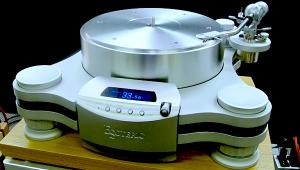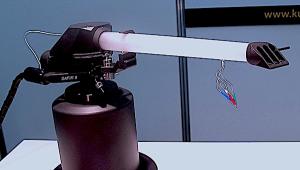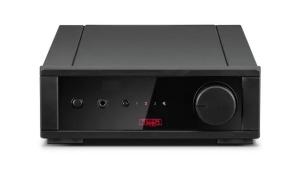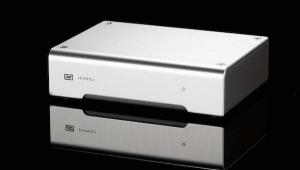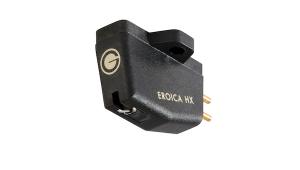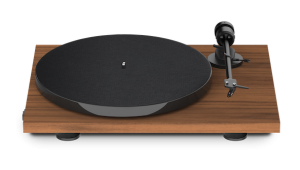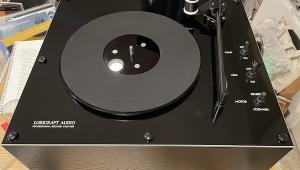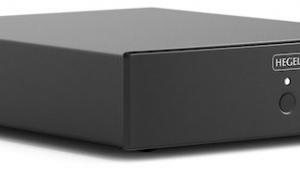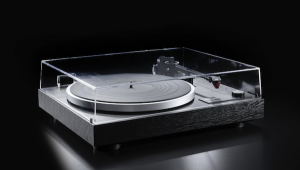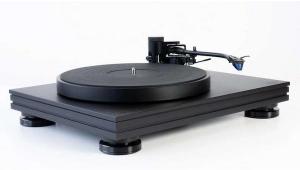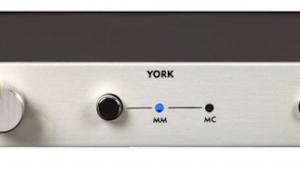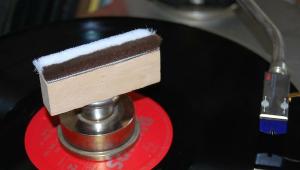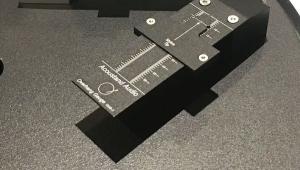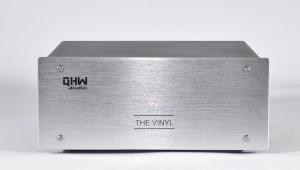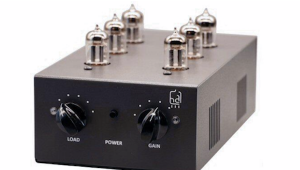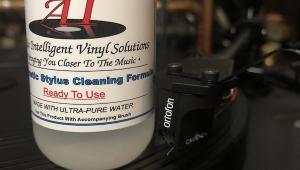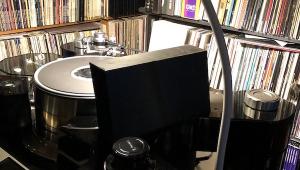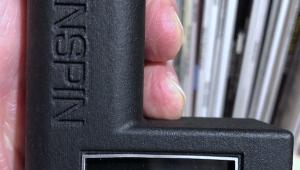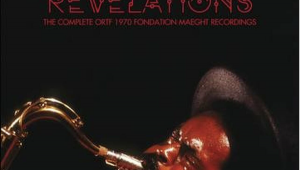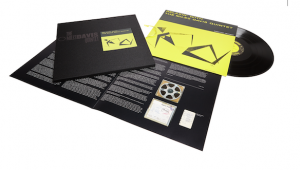The Lyra Delos Moving Coil Cartridge
Designer Jonathan Carr’s latest Lyra is a $1650 cartridge color schemed in champagne gold and red, I’m sure coincidentally, to match perfectly with darTZeel gear.
The Delos, machined from solid aluminum billet, features a 2.5µm x 75µm Namiki microridge line contact stylus, a solid boron cantilever and coils of 6-N high purity copper. Output of the 7.3 gram cartridge is a relatively high 0.6mV@5cm/sec while internal impedance is moderately low at 8.2 ohms. Like other Lyras the Delos uses a yokeless, Neodymium disc direct magnet system. The connection pins are silver plated.
As with any line contact type stylus, correct VTA/SRA is critical to optimizing performance so a VTA adjustable tonearm is recommended if not mandatory. Compliance is approximately 12x10cm/dyne at 100Hz. Recommended tracking force has a narrow window of 1.7g—1.8, with 1.75 “preferred.” Recommended loading is between 91ohms and 47kOhms determined by listening. VTA is 20 degrees, which Lyra says is achieved with the arm parallel to the record surface. As with other Lyras, the generator is integral to the body as opposed to being a completed mechanism inserted into a body. The result is better mechanical grounding, energy transfer and inherently correct alignment of the generator and body.
You can determine the “mathematically correct” loading according to Carr’s instructions by determining the total capacitance between the Delos and the phono stage. While the ultra low inductance of moving coil cartridges makes capacitive loading far less critical than it is with MM cartridges, there remains a relationship between capacitance, load value, bandwidth and the amplitude of the ultrasonic resonance.
Usually though, a setting of 10X the internal impedance is a good starting point, which is why Lyra species 91 ohms as the low, which is just above 10X the Delos’ 8.2 ohm impedance. According to the instructions if your cable’s capacitance is 100pF per meter, for instance, loading at 390 ohms will suppress the peak to 3dB while 200 ohms will suppress it to 0 at the expense of slightly poorer phase response and reduced dynamics. I went with 500 ohms but listened at 100 ohms as well, which is where I preferred it.
One interesting new design wrinkle here is a new body angle and a “pre-angled” damper system that aligns the coils and magnetic circuit with the application of the proper VTF. Most cartridges, Lyra claims, provide this alignment only when no tracking force is applied.
Delos Sound
Lyra’s 5th generation Skala (now priced at $3555) introduced back in 2007 announced a change to company’s signature sound. The Skala maintained Lyra’s fast, detailed attack but added a richer sustain that produced greater body and a “velvety smoothness” (my review words) missing from other Lyra cartridges, that led some to wrongly declare the Skala superior to the top of the line Titan i (not counting the limited edition Olympos).
While I don’t have a Skala here to compare to the Delos, I’m confident in saying that at less than half the price of the Skala, the Delos extracts close to the same amount of detail while avoiding most of what some would call the Helikon’s overly analytical, somewhat threadbare personality.
I still think the Helikon is one of the great under $3000 cartridges when used with appropriate associated gear, but the Delos at $1500 manages the Helikon’s fast attack and detail while adding a dose of the Skala’s richer, more meaty sustain.
The Delos combines ultra-fast detailed and pristine transients with sufficient midband richness (but not bloat) to avoid sounding threadbare or overly analytical.
Its bottom end response is equally fast and tight, though for $1500 you cannot expect and don’t get the depth and weight more expensive cartridges provide. Unless your system goes down in the 30Hz and below region you’re not likely to feel as if you’re missing much.
The Delos reminds me of a top quality two way loudspeaker whose designer chose speed, neutrality and high resolution over warming up the lower midbass to produce the illusion of deep bass. If you want warm and romantic go elsewhere but I usually find such cartridges become cloying and boring after the initial spell wears off.
The Delos aims for tonal neutrality, particularly in the midrange and upper midrange, which were essentially uncolored, transparent and notably free of congestion.
The cartridge’s dynamic expression, particularly on the microdynamic level, was beyond what is usually attained at this price point as was its ability to produce image and stage three-dimensionality.
The double 45rpm edition of Analogue Productions’ reissue of The Tony Bennett/Bill Evans Album produced a piano sound that was harmonically and texturally rich and mostly free of cardboardy or “tinkly” artifacts, though with less “wood” than you’ll hear from higher performance, more expensive cartridges.
Bennett’s compact, well-focused voice had but a trace of edge that a more fleshed out bottom end would have better balanced, but the Delos’ rendering was preferable to muddy warmth produced by more “romantic” sounding cartridges at this price point.
The bottom line is that the new Delos is a high value cartridge that’s both less expensive and a considerable sonic step up from the now discontinued Argo and that’s an assessment I was able to make in real time.
